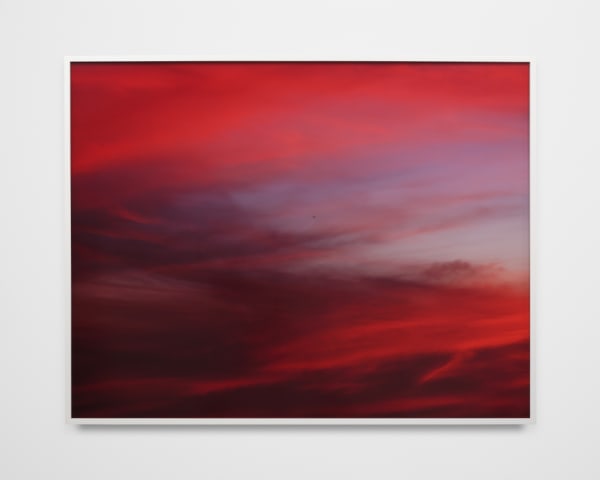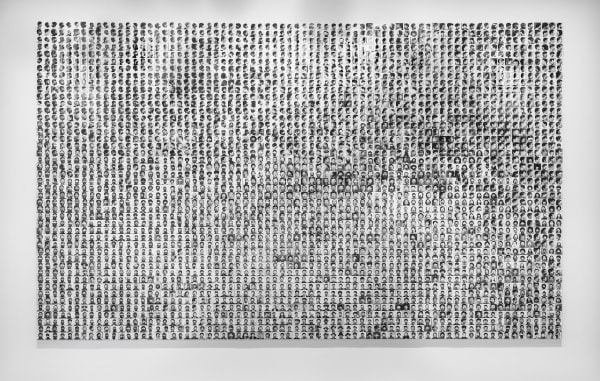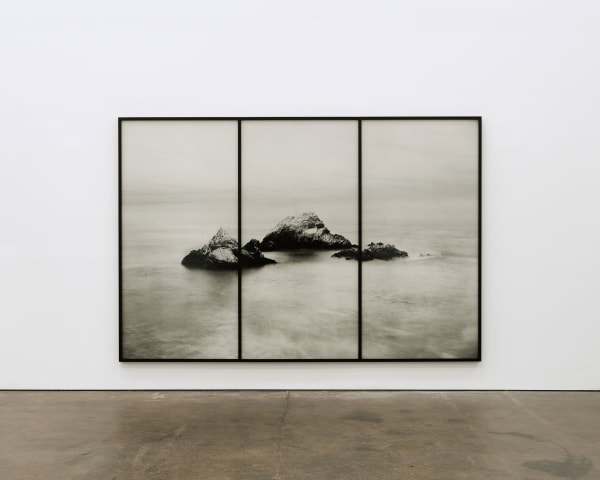Trevor Paglen: Signature, Site, Metadata
-
-
Trevor Paglen’s oeuvre has been an unparalleled investigation into the nature of art, images, and the politics and aesthetics of vision. Over two decades of work, he has circumnavigated the earth to track and photograph secret prisons, surveillance satellites, and classified drones, plumbed the depths of the ocean to find submerged internet cables, launched two satellites into orbit, and picked apart artificial intelligence systems to show the deeply troubling principles and concepts upon which many of them are founded.
Signature, Site, Metadata is an exploration of the various threads in his work over the last two decades, uncovering connections between such seemingly diverse topics as covert military and intelligence operations, artificial intelligence, mass incarceration, 19th Century landscape photography, “smart” weapons, and mass data collection. Shown together, the works in this collection point to the various ways that the history of image-making and it’s mechanization is one not only of aesthetics, but of politics and power.
Everywhere in Signature, Site, Metadata, images are not what they appear to be. In A Standard Face, Paglen has drawn a simple almost cubist-type take on a portrait. But motivation for the drawing is not self-evident: it is in fact, a reconstruction of a mathematical model of a face developed by researchers working for the Central Intelligence Agency in the 1960s to invent modern facial recognition technology. Similarly, in Untitled (Reaper Drones), a photograph appears to depict deep red clouds just before a desert sunrise. On closer inspection, however, several Reaper-type combat drones reveal themselves to be present in the skyscape (Paglen created this series of images by photographing the skies outside desert drone bases with large-format cameras). These sorts of reversals and reveals are everywhere in Paglen’s work: an urban street scene is the site of an American “black site” in Kabul; a piece entitled We is created using hundreds of examples of a handwritten preamble to the American Constitution that have been harnessed to train AI systems how to read human handwriting; a photograph of the spring bloom bursts with color that turns out to have been created by a computer vision system analyzing the formal structure of the photograph to dissect the various objects and textures into their component parts; a massive wall piece consisting of more than 3,000 gelatin silver prints of prisoner mugshots is created from one of the foundational sets of images used in facial recognition technology.
Paglen’s work suggests that seeing is never “neutral” and that the meanings of images are never self-evident. His provocations have never been more urgent, as the advent of mechanized forms of vision - facial recognition, computer vision, and artificial intelligence - increasingly use cameras and automated image-interpretation to surveil and influence our everyday lives.
As the world attempts to reckon with systemic racism, patriarchy, and other forms of systemic oppression, Paglen’s work on the politics of images, their interpretations, and their uses is as urgent as it is consequential.
-
-
“The first work on automated facial recognition was funded by the American CIA in the early 1960s and led by an early pioneer in the field of artificial intelligence named Woody Bledsoe. Despite the fact that much of Bledsoe’s research was classified Top Secret, many of the techniques he developed would become standards in the fields of facial recognition and AI.
Bledsoe’s approach to facial recognition were inspired by measurement techniques employed by early 20th Century physiognomists such as Cesare Lombroso and Samuel Morton, which Bledsoe adopted in his attempt to use computers to recognize individual faces. Bledsoe’s technique relied on the construction of a ‘standard head’ – a mathematical model to represent a generic head – based on measurements of the faces of people working in his lab. He used that standard head as a benchmark against which to measure other faces. Going back to Bledsoe’s original research, I reconstructed his ”standard head” from information left behind in his archives at the University of Texas and provided to me by Prof. Stephanie Dick, who studies Bledsoe’s legacy.
This is a drawing of the mathematical abstraction of a human face that Bledsoe used in his experiments. Bledsoe’s company, Panoramic Research, conducted other work on behalf of the CIA including work on the CIA’s experiments with LSD and mind control under the code name MK-Ultra.”
- Trevor Paglen
-
-

-
-
“With the beginning of the so-called War on Terror in the early 2000s, the CIA set up a network of secret prisons in Afghanistan and elsewhere around the world. Hundreds of “ghost prisoners” went through this system of extrajudicial disappearance and imprisonment. The black sites became synonymous with torture. The locations of the secret prisons remain some of the CIA’s most closely-guarded secrets.
In 2006 I travelled to Afghanistan to research and photograph CIA black sites. The site shown here was brought to my attention by Afghan journalists and human rights activists in Afghanistan. The code name of this second site remains unknown.”
- Trevor Paglen
-
-

-
 Installation view of Trevor Paglen’s "They Took the Faces from the Accused and the Dead … (SD18)," 2019 in "Uncanny Valley: Being Human in the Age of AI" at the de Young Museum, San Francisco
Installation view of Trevor Paglen’s "They Took the Faces from the Accused and the Dead … (SD18)," 2019 in "Uncanny Valley: Being Human in the Age of AI" at the de Young Museum, San Francisco -
-

-
-

-
-
 Trevor Paglen, "Seal Rocks Circle Hough Transform; Region Adjacency Graph; Speeded-Up Robust, Features; Watershed; Good Features to Track," 2020
Trevor Paglen, "Seal Rocks Circle Hough Transform; Region Adjacency Graph; Speeded-Up Robust, Features; Watershed; Good Features to Track," 2020 -

"This is a photograph that a lot more work went into getting right than I would have thought. The site itself isn't particularly difficult to get to - the Seal Rocks are just off the Cliff House on the north end of San Francisco's Ocean Beach. The photograph is a reference to a Carleton Watkins image from 1868. A few factors had to come together to make it all work. It had to be shot on an overcast day to get the kind of soft horizon and transition from the sea to the sky that I wanted. And it had to be a pretty long exposure to get the water to 'smooth' out. It took me a long time to figure this out - and with 8x10 film costing about $50 every time you take a picture - it cost at lot of money to make. I eventually had to get a neutral density filter for the 8x10 camera to 'slow' down the exposure time to get it closer to what it would have been for the less sensitive emulsions used in the 19th Century.
The image is overlaid with computer vision algorithms designed to break the overall image into a series of regions and keypoints that make the image 'intelligible' to machine vision systems. These algorithms in particular are prominently used in 'smart' weapons systems and other robotics technologies."
- Trevor Paglen
-
-
"This photograph of the spring bloom has been analyzed by an AI system to look for the 'deep saliency' in the image. In other words, an AI system is 'looking' at the photograph and trying to determine what the different parts of the image are (i.e. different shapes, objects, textures, and tones). Essentially, we are looking at an AI system trying to dissect the photograph into its constituent parts.
The colors in the image represents the different self-similar regions that the AI detects. The colors are arbitrary - they don't represent colors as such so much as what the AI thinks the different parts of the image are."
- Trevor Paglen
-
Trevor Paglen and Dennis Scholl in Conversation
Friday, March 26, 2021 -

-
For more information please contact Altman Siegel at info@altmansiegel.com or 415.576.9300.
















